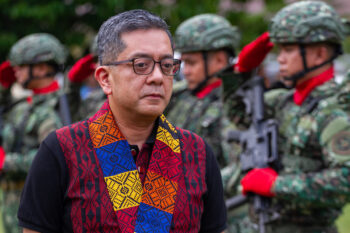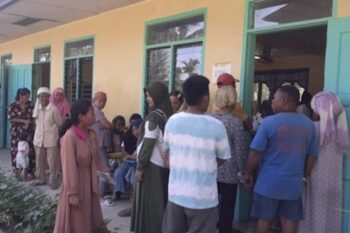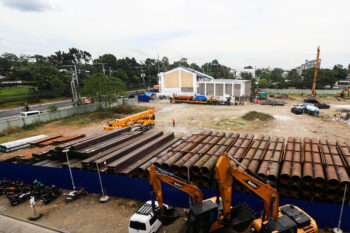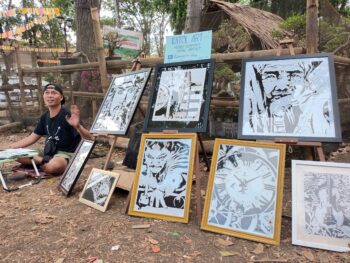HENDERSON, Nevada (MindaNews / 1 Feb) – In an effort to decompress from a continuing nightmare of current political events, we put our focus on some old books published in 1898 and 1899, about the acquisition of the Philippines by the United States, after they won the war with Spain. This was actually an offshoot of a curiosity that stemmed from watching a series of documentaries on the National Geographic Channel, about the days immediately after Germany was defeated by the Allies in World War II.
The atrocities recorded in film, of the time, by the victors, were equally as unconscionable as the Germans’ treatment of peoples they thought were less than them. Driven by anger and rage from the years of indiscriminate cruelty, during the years they had to suffer, the brand of retribution they dealt to their former oppressors were just as heinous, it appears. Talk about casting the first stone…
These short films and photos were never shown before. A deep kind of sadness seemed to overpower the shock we felt, when we saw how the crowds were no longer spectators, but participants in the hangings and beatings and executions. The one we cannot seem to shake off was when the “collaborators” were lined up on the side of a road, where they were all executed by gunfire. Then a truck came and ran over the bodies over and over. As if to deal death a few times more could dim the darkness in their hearts.
The two volumes in quarto form, Our Islands and Their People (1899), is an actual written record of impressions and events that happened, in the author’s view, of the first few days, months and years even, of how the American contingents, upon arriving and occupying Manila, saw their new acquisition and their new citizens. We say citizens because all throughout the chapter on the Philippines (Vol. II), the writer refers to the Filipinos as being the newest addition to “…their Great Nation’s” citizenry.
The other, hardbound and textbook-sized, The Story of the Philippines and Our New Possessions, including The Ladrones, Hawaii, Cuba and Porto Rico, (1898), was less formal in that there were not too much of the military side of things. It deals more on the laws and customs and habits, and even the “scenery” of their new territories. And, seeing as how they called the Philippines “THE ELDORADO OF THE ORIENT,” the riches they found in our natural resources, must have been an added bonus from their victory in the war with Spain.
It certainly captured our attention. The voice we hear, as if from a time of our forefathers, how a Caucasian saw the land of our birth, when he first encountered the Filipino in his world.
After the initial excitement of reading through the first chapters of how the “superior” American battleships had sunk what was left of the Spanish Armada in Manila Bay, and what the city of Manila, and its environs had, including the people that populated them; we looked at some photos and their captions.
“In all the Filipino cities there are many girls and young women who make their living by selling the native fruits and flowers on the streets. But few of them are good-looking enough to excite poetic fancy, and their dispositions are not, as a rule, of the most lovable character.”
The above is a direct quote from a photo that had the title, Fruit Sellers of Manila, from Vol. II of Our Islands Their People.
We shall quote another caption from the same page. The title of this photo, Mestizo Boy and Girl.
“The mestizos are half-castes, usually of the native mothers and Spanish or Chinese fathers. A native author declares that, as a rule, ‘the mestizo girls are often of wonderful beauty,’ but his imagination appears to be more vivid than the facts warrant.”
And, from the photo, Group Of The Better Class of Filipino Women, Suburbs of Manila.
“The two women standing second and third on the right of the group are Mestizos, and their more agreeable cast of countenance is inherited from their Spanish father. The Malay predominates in the others, and shows plainly in the rather unpleasant scowl of their faces.”
Our sense of disbelief in the shameless criticisms of the author, regarding the Filipino woman, was becoming too uncomfortable. We closed the heavy folio and sat and steamed for a while. We had to remind ourselves that there was no such thing as “political correctness” in those times. Or, maybe, even plain old respect, especially if it was a view by a conqueror over the conquered. As Mr. Trump so aptly said in his “speech” at the CIA, “To the victors, the spoils of war…”.
As we shall continue to read through these books, we feel there will be more of the same affectations of these American authors, writing in their white towers of “superior knowledge and wisdom.” Of their impressions and self-centered analyses, narratives of an archipelago and people, they hardly even knew.
We do find the value in knowing, though, how far this kind of language, and thinking, has gone from the uncensored judgments of even the most superficial generalizations of a land and its people; that, it still has a ways to go.
(Mindanawon Abroad is MindaNews’ effort to link up with Mindanawons overseas who would like to share their experiences in their adopted countries. Margot Marfori is an author and visual artist from Davao City. She is currently based in Henderson, Nevada.)







